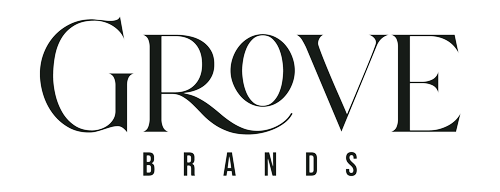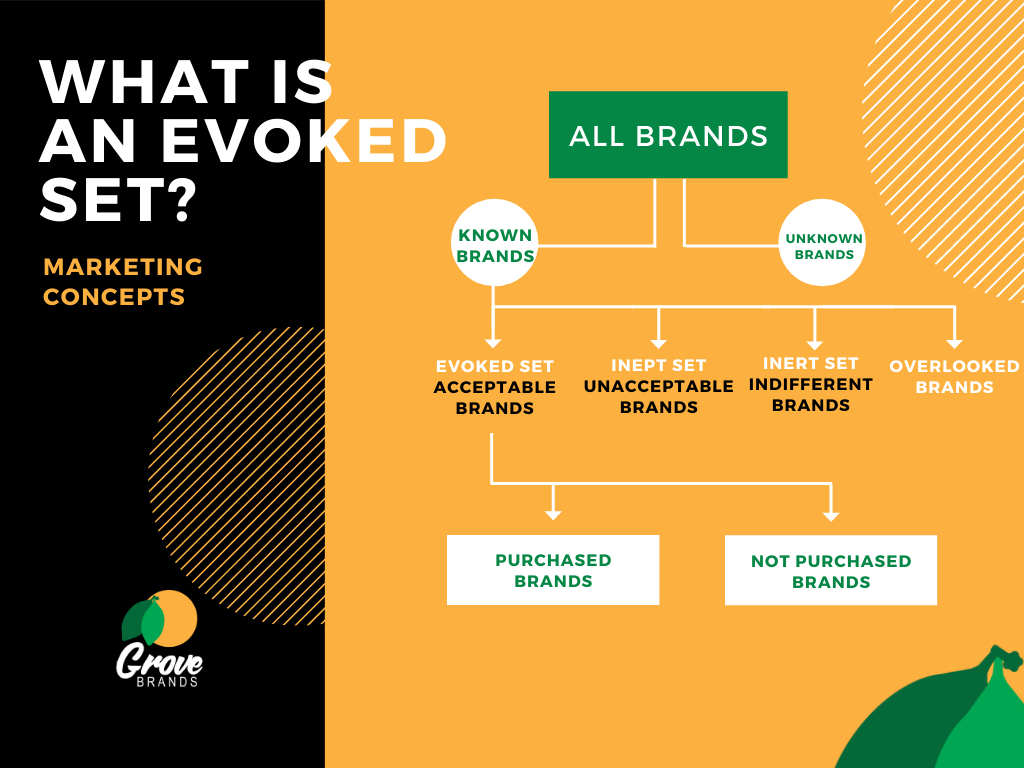What is an Evoked Set? An Overlooked Asset of Branding Strategy
The marketing world is full of concepts and phrases representing psychological phenomena in a way that allows us to create strategies around them. The concept of an “evoked set” is no exception. But, what is an evoked set? Why is it important for marketers and business owners to understand and use in their marketing strategies?
What does evoked set mean?
In the simplest of terms, an evoked set is defined as the brands that come to a consumer's mind when a need for a product or service arises. These are considered acceptable brands based on the consumer’s perception of their products, and their brand equity with a consumer. The evoked set can include both brands that the consumer has purchased from before, as well as brands they’ve never purchased from.
Why is it important to be a part of a customer’s evoked set?
Brands that are part of a consumer's evoked set have an opportunity to earn them as a customer or a repeat customer. It is critical that brands earn this status for their target audience, as it is a requirement to sell their product or service.
When should you consider your place in an evoked set while planning your branding strategy?
The goal of all brands should be to be part of their target market’s evoked set, so this is something that must be taken into consideration early on in the branding process. One thing to consider is that in some cases, your brand simply won’t be a consideration for all individuals within a market and that’s okay. For instance, a “generic” brand may not be an acceptable option for a high-end consumer, making it fall into their inept set.
How will the concept of an evoked set help your brand compete?
The idea of evoked sets is an important concept for understanding how consumers make decisions. In many cases, the consumer's exposure to a brand over time plays into their ultimate decision once a need arises. This is one reason why investing in branding and understanding its impact on these future decisions is so important. In some cases, marketing activities such as social media have a big impact in allowing your brand to become part of a future customer’s evoked set, even if they don’t have an immediate need for your product.
What are some examples of an evoked set?
The easiest way to understand what an evoked set is? Think about your own! After all, each and every person has a unique evoked set of brands when a product is thought about.
What is an example of an evoked set?
This would vary, but an evoked set for say, a car, would include all of the brands that you are aware of, find acceptable, and have a positive perception of. Let’s say a person is looking for an SUV. They simply don’t like Ford because of some negative perception, have never heard of a Kia Telluride, but are interested in SUVs from Toyota, or Subaru. These two are now in their evoked set. If they ultimately decide on a Toyota, Subaru would still be part of this evoked set.
How are evoked sets unique to each customer?
An evoked set is a highly individualized perception of brands, based on an individual's exposure, beliefs, personality, experience, et al. While there can certainly be statistical similarities across demographics, each and every individual in a target market will likely have a unique evoked set.
How can evoked sets change over time?
Yes, an evoked set can and will change over time as a consumer's circumstances change. A change in income, marital status, and even location can impact one’s evoked set.
For instance, a consumer whose income drops drastically must expand their evoked set to include previously unacceptable brands that are less expensive than previously considered. Note that the other brands are still in their evoked set, even though they cannot afford them. Alternatively, someone whose income goes up is suddenly exposed to brands they were previously unaware of.
Differences of evoked set and other branding sets
An evoked set is just one of a handful of branding sets that describe a consumers perception of brand options.
What are the differences between a universal set and an evoked set?
A universal set is all of the potential consumer options that can solve a specific problem. The universal set differs from an evoked set as it also includes unknown or overlooked brands, as well as inert sets and inept sets.
How does an inert set differ from an evoked set?
An inert set is essentially a collection of brands that a consumer is indifferent to. They don’t necessarily dislike these brands, it’s just that they don’t feel any legitimate connection to it. Inert sets include brands that haven’t spoken to a consumer’s individual desires and values. Brands that find themselves in a consumer’s inert set haven’t done enough to effectively brand themselves to that specific demographic or individual.
Why is it bad to be part of a customer’s inept set?
An inept set comprises brands that are actively perceived in a negative light. There are many reasons this can happen, from a bad experience with the product, something about the brand that they find distasteful, a negative experience that someone else shared with them, or countless others. It’s generally a bad position to be in, however, some brands have actually accepted this placement in order to solidify their position in the evoked set of consumers with values opposite of those who view the brand negatively.
What are some brands that have strategically placed themselves in an inept set?
One could argue that brands like Patagonia, Nike, and others have accepted that certain business decisions could place them in the inept set of some consumers with a focus on pioneering long-term brand strategies.
They’ve written off certain consumers, even though they are in their market and have even held positive perceptions of them in the past. In some cases, this negative perception won’t even take them out of their evoked set, which is something I shared in comments with the New York Times.
Strategies to become part of an evoked set
Understanding the concept of evoked sets is a helpful starting point to building a brand. The strategies to move a brand into this coveted position, however, take work and begin from brand conception. This means that the essence of your brand has critical implications on your brand’s future growth potential.
How do you raise brand awareness to become part of an evoked set?
There are a number of strategies that brands utilize to enter a consumer's evoked set, but one must remember that when we strive to be in everyone’s evoked set, it can be counterproductive.
Brand advertising is one of the best ways to avoid becoming an overlooked brand or part of an inert set. Establishing your brand in the eyes of consumers and consistently building connections and trust is critical to valuable, long-term relationships with them.
Additionally, indirect marketing approaches such as social media marketing allow brands to build relationships with consumers who aren’t necessarily in their market, especially for aspirational brands such as boat manufacturers, designer brands, luxury car companies, et al.
How can positive customer experiences elevate your place in a consumer’s evoked set?
Being in a consumer's evoked set is great, but being one of their purchased brands is even better. Prior to purchase, brands can create positive experiences and brand perceptions through strategies such as cause marketing. Elevating one's brand is critical, and acts such as committing to sustainability, something branding titan Larry Light called “consequential”, is one way to do it.
The entire experience upon purchase is also critical, down to the buying experience, packaging, customer services, and, of course, product experience. If you’ve earned a purchase, it’s imperative that the experience leaves the customer beyond satisfied, as it encourages repeat business and increases the lifetime value of that customer.
What ways can complementary branding place you in more evoked sets?
Working with complementary brands is an excellent strategy for quickly joining the ranks of the evoked set, as it puts the brand in front of the customers of established brands. These customers are likely to already have a need for your product or service based on their relationship with the complementary brand. Additionally, the brand equity they’ve established can lend credibility to yours.
For instance, a hypothetical high end brand of mustard looking to enter a market that has a high end hotdog brand with a cult following of highly engaged and satisfied customers. Finding brand partnership opportunities such as co-branded recipes, promotional offers, etc. are a great way to be exposed to their customer base and tie the products in the eyes of the consumer.
The idea of evoked sets is a valuable concept for understanding a brand’s relationship and place in the eyes of consumers. It’s used as a research tool for understanding how the brand is relating to its target audience, and provides marketers with insight into what is working and what is not. In the end, finding your place in a consumer's evoked set is dependent on your branding, and countless other factors that relate to them individually. This critical insight is priceless when truly connecting with your target market.

